
Pyst is an adventure computer game released in October 1996. It was created as a parody of the highly successful adventure game Myst. Pyst was written by Peter Bergman, a co-founder of the Firesign Theatre, and was published by Parroty Interactive, with Bergman, Stallone, Inc. as co-publisher. Mindscape began distributing the game on August 20, 1997. The parody features full motion video of actor John Goodman as "King Mattruss", the ruler of "Pyst Island". Versions of the game were produced for both the Windows PC and Apple Macintosh operating systems.

The Legend of Lotus Spring is a graphical adventure computer game co-developed by Women Wise and Xing Xing and released on Valentine's Day in 2000 in North America. It was originally released by Xing Xing in 1998 in China.

Star Warped is a first-person point-and-click adventure video game that parodies the Star Wars universe, specifically the original trilogy released between 1977 and 1983: Star Wars, The Empire Strikes Back, and Return of the Jedi. It was created by Parroty Interactive, which was a division of the game's publisher, Palladium Interactive. Star Warped was released in the United States and Canada, for both Windows PC and Macintosh, in late 1997 as a follow-up to their debut Myst parody, Pyst. The game is no longer in release, as Parroty's parent company folded after being bought by The Learning Company in 1998. The game invited players to "Be seduced by the power of the Dork Side". Star Warped received mixed reviews from critics: some praised the game's variety, originality, and humor, while others dismissed it as lazy, unfunny, and dull.

Koala Lumpur: Journey To The Edge is software company Broderbund's first comedy adventure video game released for the PC in 1997. The name of the lead character is a pun on Kuala Lumpur, the capital of Malaysia.
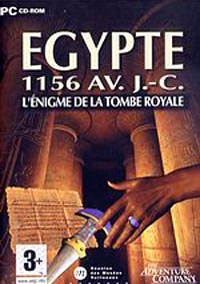
Egypt 1156 B.C. – Tomb of the Pharaoh is a 1997 adventure video game co-published by Cryo Interactive Entertainment, Canal+ Multimedia and the Réunion des Musées Nationaux for the Microsoft Windows and PlayStation. It was later released in North America by DreamCatcher Interactive.

Egypt III, known as The Egyptian Prophecy in North America, is a 2004 graphic adventure game developed by Kheops Studio and published by The Adventure Company. The player must solve an array of ancient riddles that will help a dying Pharaoh survive and restore Egypt to glory. The game is the third and final game in the Egypt trilogy, following Egypt 1156 B.C. and Egypt II: The Heliopolis Prophecy. In 2010, Microïds released an adaptation of the game, split into parts, for the Apple iPhone.

Jerusalem: The Three Roads to the Holy Land is a 2002 historical adventure game. The game was developed by Arxel Tribe and Réunion des Musées Nationaux, and published by Cryo Interactive. It is a sequel to the game Pompei: The Legend of Vesuvius.

The Secret of the Nautilus is a 2002 adventure video game, inspired by Jules Verne's 1870 science fiction novel Twenty Thousand Leagues Under the Seas. It was developed by Cryo Interactive and released for Microsoft Windows based PCs.

Road to India is an adventure video game released in 2001, that was developed and published by Microïds.

Martin Mystère: Operation Dorian Gray is the only video game adaptation of the Italian sci-fi detective comic-book franchise called Martin Mystère, starring a detective and his assistant, Java. It is a point-and-click adventure game, published in 2005 by The Adventure Company in North America and GMX Media in Europe. A Macintosh version was planned, but was cancelled in the evaluation stage. Versions for PlayStation 2 and Xbox were also planned, but were also cancelled.
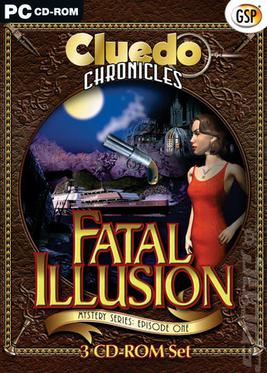
Clue Chronicles: Fatal Illusion is a Windows point-and-click adventure game based on the Cluedo franchise, known as Clue in North America. It is a reinterpretation and adaption of the Clue board game as an adventure game including many of the original characters. The game was distributed with a variety of covers, each featuring a different murder weapon.

Santa Fe Mysteries: Sacred Ground is a video game, the second in the Santa Fe Mysteries series after The Elk Moon Murder.

Karma: Curse of the 12 Caves is a 1995 FMV adventure game. In 1998, DreamCatcher Interactive re-released the game as Quest for Karma. The game was released in Japan for PlayStation and Sega Saturn as Takuramakan.

Mummy: Tomb of the Pharaoh is a point-and-click adventure video game released on August 31, 1996, by Interplay Productions on Windows and by MacPlay, a division of Interplay Productions at the time, on Macintosh. It is a sequel to Frankenstein: Through the Eyes of the Monster. The game was developed by Amazing Media, directed and produced by Jeff McDonald, Keith Metzger, and Loring Casartelli, written by McDonald and Metzger, and composed by Márcio Câmara. Malcolm McDowell stars as Stuart Davenport, one of the main characters of the game.

Physicus: Save the World with Science! is a 1999 educational adventure video game developed by Ruske & Pühretmaier Edutainment and published by Heureka-Klett-Softwareverlag and Tivola Entertainment. It aims to teach players about physics concepts. It is part of a series that includes the chemistry-themed Chemicus and biology-themed sequel Bioscopia. It was the second learning adventure game by Ruske & Pühretmaier after the music-based Opera Fatal. The game's website had a minigame called "PHYSICO DriveIn" that players could download and complete in to get the highscore, which would win them a free copy of a game by the studio. A sequel entitled Physicus: The Return was later released, and was remade for the iOS.
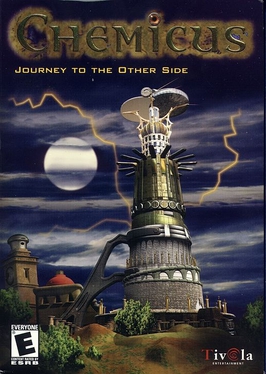
Chemicus: Journey to the Other Side is a 2001 educational adventure video game by Heureka-Klett as part of Tivola's "Quest for Knowledge" series. A sequel named Chemicus II: Die versunkene Stadt was released in 2002. The game was originally released in Germany.

Reah: Face the Unknown, known in North America as simply Reah, is a 1998 first-person puzzle-oriented adventure game with a non-linear plot, described as a Myst-clone. It was developed by Project Two Interactive / Black Friar and published by Detalion and LK Avalon. It was distributed by Erbe in Spain on October 10, 1998. It was published by Project 2 Interactive in the Netherlands, and distributed in the U.S. and Canada by GT Interactive in 1999.

The Forgotten: It Begins is a 1999 adventure/puzzle video game developed by Ransom Interactive and published by DreamCatcher Interactive. A sequel was to be released called The Forgotten II: The Collection. The Forgotten narrative was originally supposed to last over 7 games ("modules"), but these were never completed.
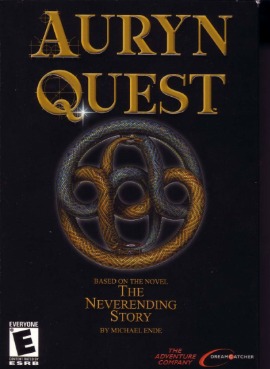
Auryn Quest is a jump and run adventure game based on Michael Ende's novel The Neverending Story and his film adaptation of the same name. Originally developed by Discreet Monsters, "bad luck and mishaps" left the company bankrupt, and the game was eventually completed by Attraction. Initially an ambitious adventure game, bankruptcy forced the release to be reworked into a first-person action, 3D platformer jump game vaguely based on its source material. The first entry in a subsequently abandoned series, it became the sole game project for Discreet Monsters.
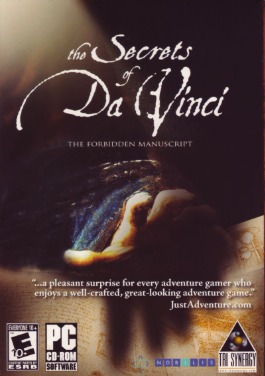
The Secrets of Da Vinci: The Forbidden Manuscript is an adventure game developed by Kheops Studio and published by Tri Synergy on June 7, 2006 on the PC. In 2009 it was released on the Mac OS X.




















